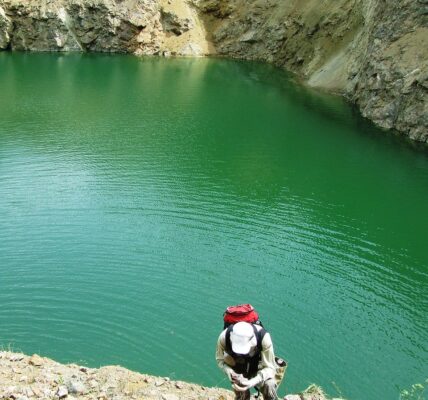Geology is a broad scientific concept that includes many subdivisions, differing in scope of application, category of theoretical deductions, and type of objects of study, described in detail below.
Geotectonics
Geotectonics is the core of geology, and this science involves the global study of the interior of the crust, the patterns and trajectories of movement of the lithospheric plates.
It is thanks to geotectonics that reliable geological maps are made, and ultrasonic methods make it possible to determine precisely what is in the depth of rock masses or the thickness of the earth’s crust, the change of this morphological parameter over the years.
Geotectonics is rooted deep in history, and today scientists seek to determine the nature of the Earth’s crust changes, depending on various mechanical influences. This science allows us to predict the approximate age of our planet, as well as the time period during which it will remain suitable for human life.
Volcanology
From the name of this section of geology it is clear that the science studies the cause of volcano formation, their internal structure, and also predicts the risk of eruption and approximately calculates the possible consequences of this phenomenon for human life, climate and morphological changes in the earth’s crust.
The need to separate volcanology into an independent science arose many years ago, after a series of devastating volcanic eruptions that claimed the lives of hundreds of thousands of people.
Volcanology is inextricably linked with geotectonics, because molten magma comes to the surface of the Earth’s crust precisely because of changes in the location of lithospheric plates, or because of their collision.
Scientists have long mapped active and dormant volcanoes for the entire globe and monitor potentially hazardous areas. Such areas are usually located in places of tectonic rifts and in areas where the thickness of the crust is minimal.
Seismology .
This science as an independent part of geology appeared comparatively recently. One of the founders of this science was seismologist Charles Richter, who created a scale of numerical values of magnitude of the Earth’s crust vibrations.
When the lithospheric plates are brought into increased activity due to a combination of external or internal factors, they begin to vibrate. Seismic laboratories around the world record these pulses well in advance of an earthquake and transmit important information to rescue services, allowing timely action to be taken to save the population.
Modern seismology involves sophisticated electromagnetic and navigational metrology equipment that provides instantaneous automatic recording of pulses from long distances, including on the ocean floor, preventing tsunamis.
Geocryology
This branch of geology studies frozen soils located in special climatic zones that are characterized by low temperatures, long winters, and minimal precipitation.
Typically, this section of geology studies ground frost heave, the development of permafrost on a territorial basis, and the chemical composition and physical and mechanical characteristics of these ground bases.
Considering that most of the mining industry is located in areas with a harsh climate in the northern regions of our country, geocryological studies are conducted in these areas prior to the development and construction of mining enterprises.




